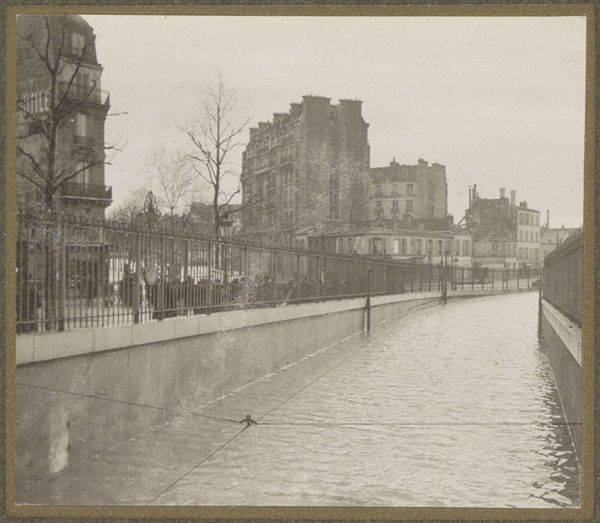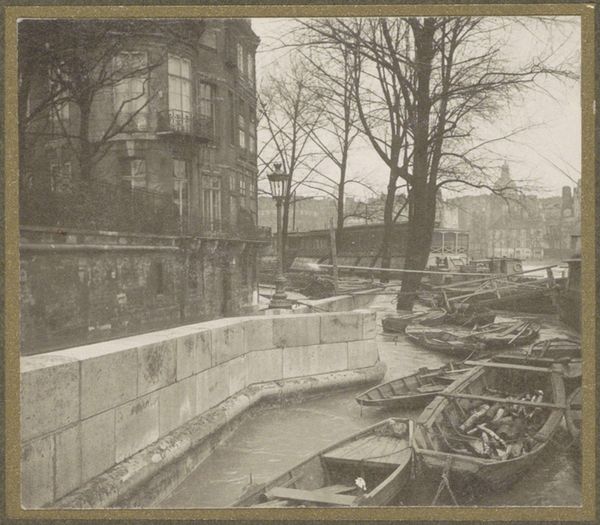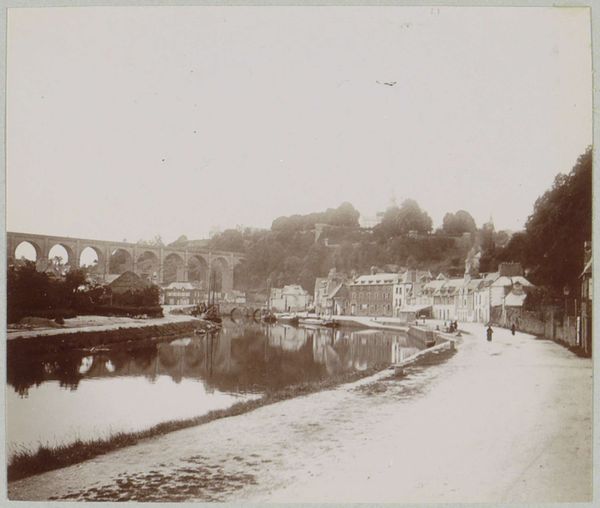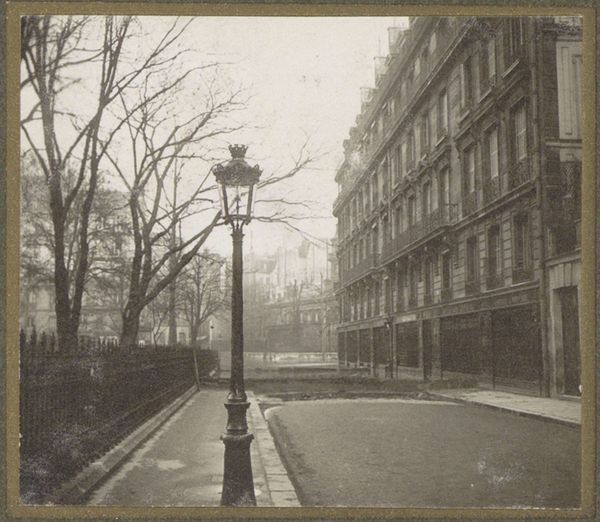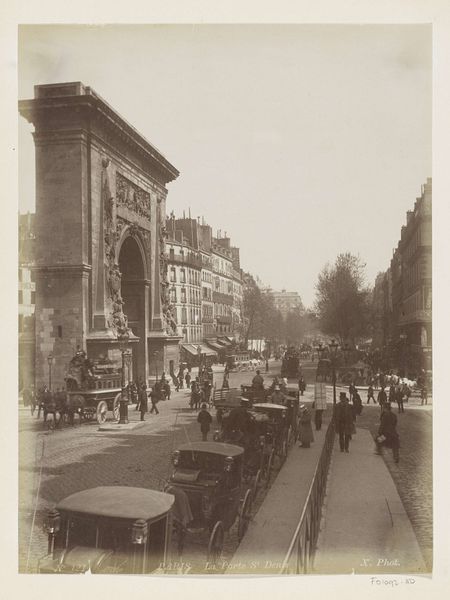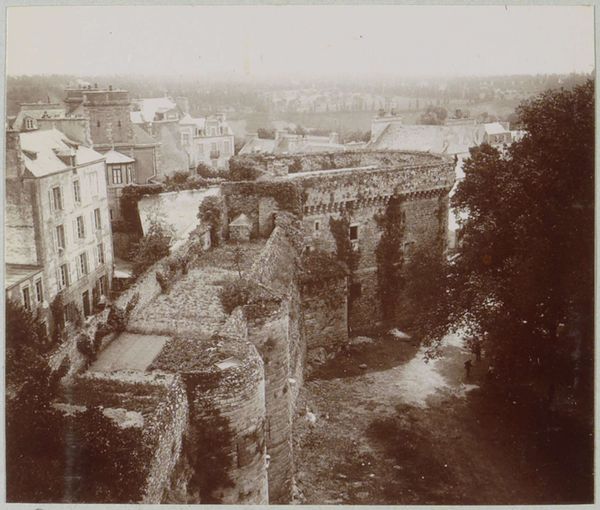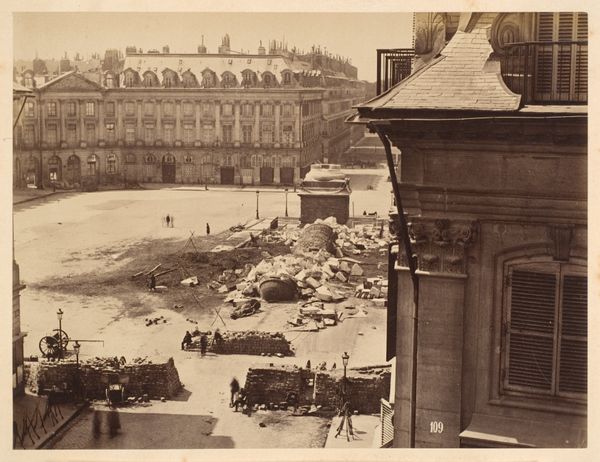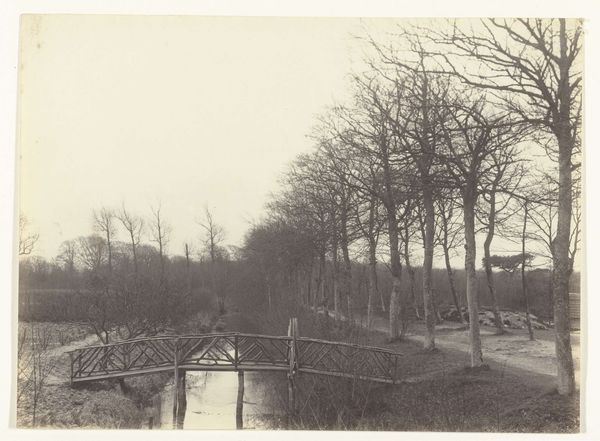
print, photography, gelatin-silver-print
# print
#
landscape
#
archive photography
#
street-photography
#
photography
#
gelatin-silver-print
#
history-painting
Dimensions: height 240 mm, width 296 mm
Copyright: Rijks Museum: Open Domain
Editor: Here we have Emmanuel Pottier's photograph, possibly from 1898, depicting "Aanleg van de metro in Parijs"—the construction of the Paris Metro. It’s a gelatin silver print, and what strikes me most is the sheer labor involved, visible in every stone and mound of earth. What can you tell us about it? Curator: I'm drawn to that same emphasis on labor, absolutely. This isn’t just a document of progress; it's a record of immense physical work. Consider the materials: the stone, the dirt, the temporary wooden structures. Where did they come from? Who moved them, and under what conditions? Editor: That’s fascinating. I hadn't considered the materials in that depth. Curator: Look at the contrast between the seemingly solid permanence of the building in the background and the disrupted earth of the construction site. One represents established power, the other, transformative labor. Doesn't that suggest something about the changing landscape of Paris at the time? Editor: I see what you mean. The building looks almost indifferent to the upheaval. How would the average Parisian have viewed this construction, do you think? Were they aware of the disruption as progress, or something else? Curator: Exactly. How was this portrayed? Were the workers idealized or dehumanized? Images like this both reveal and conceal. The clean photograph obscures the mess, noise, and potential dangers of the actual work site, don't you think? Editor: Definitely. This photograph is both informative and mediated, leaving room for many possible interpretations. Curator: Precisely. It pushes us to look beyond the surface, to the hands that shaped the city, and the social implications of this "progress." Editor: Thinking about the materials and labor involved really reframes how I see this image. Thank you! Curator: My pleasure. Hopefully this helps all of us remember that art and artifacts can be examined in the framework of economics and production.
Comments
No comments
Be the first to comment and join the conversation on the ultimate creative platform.

